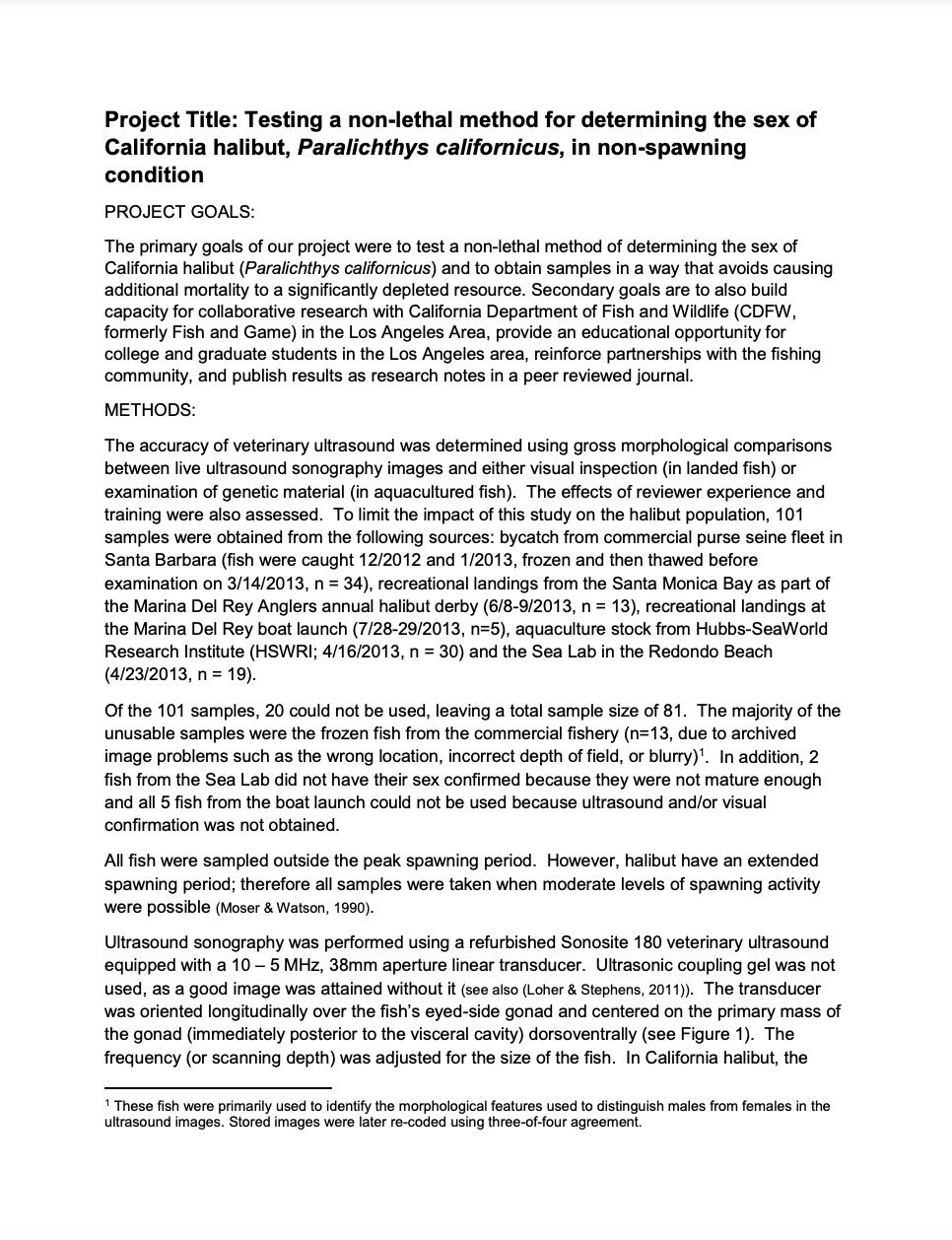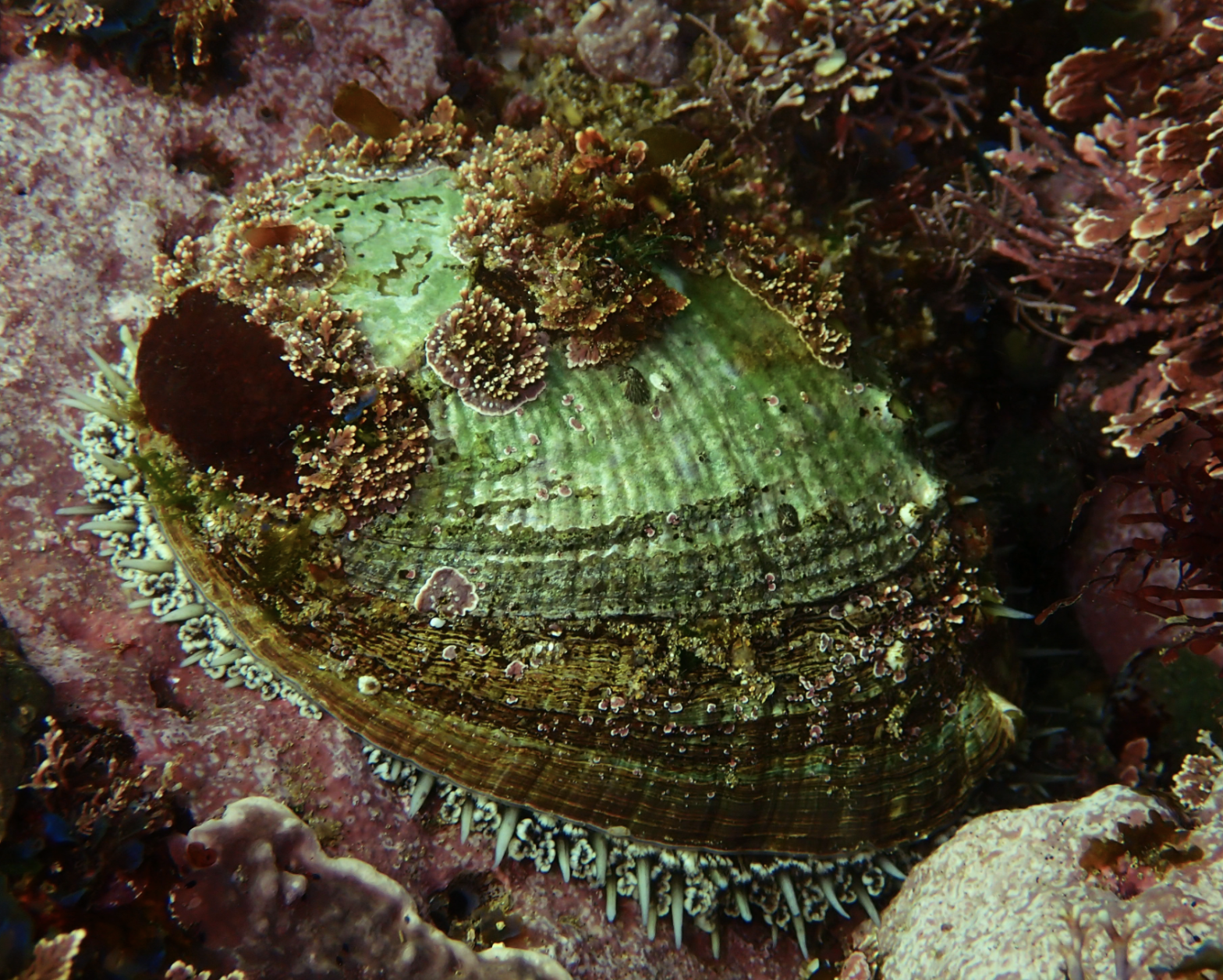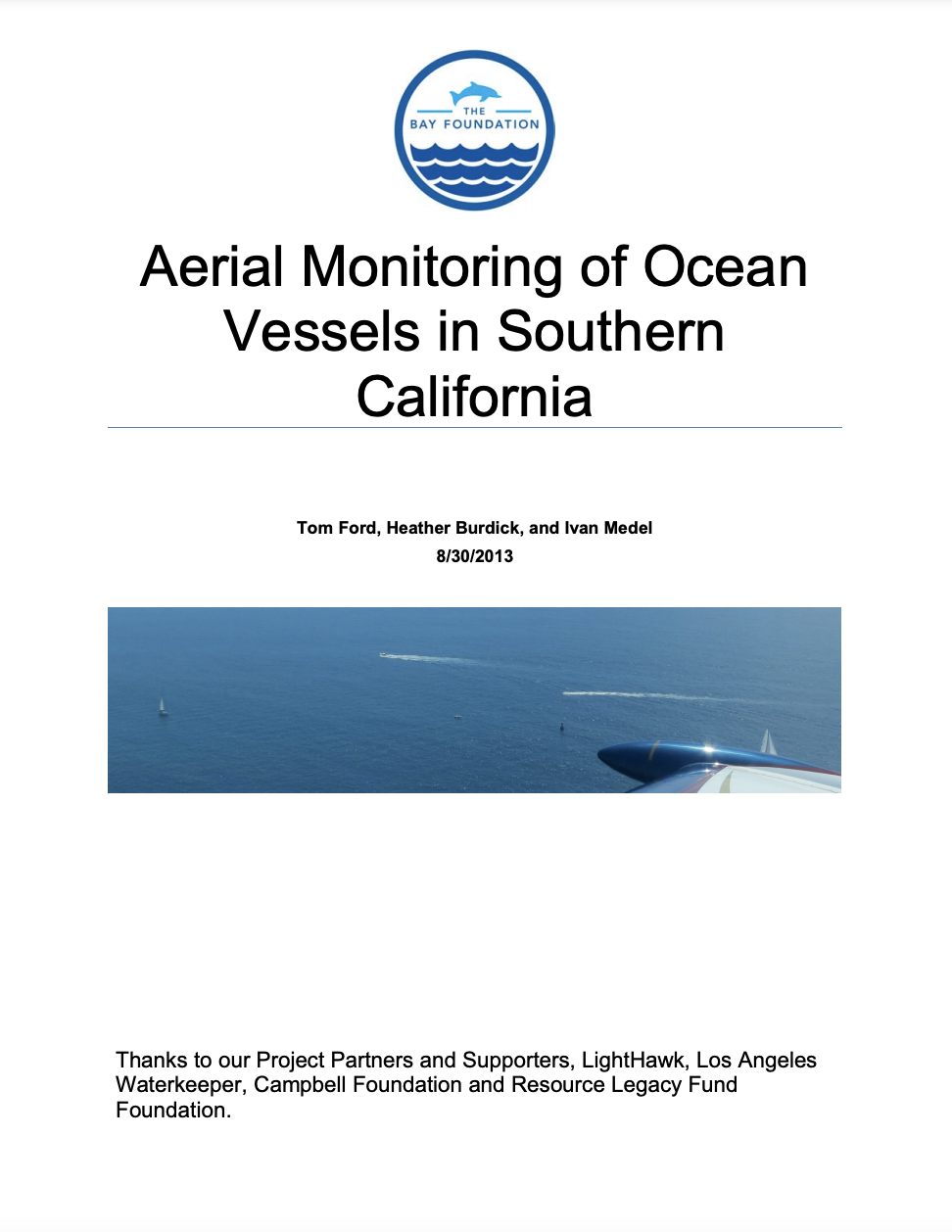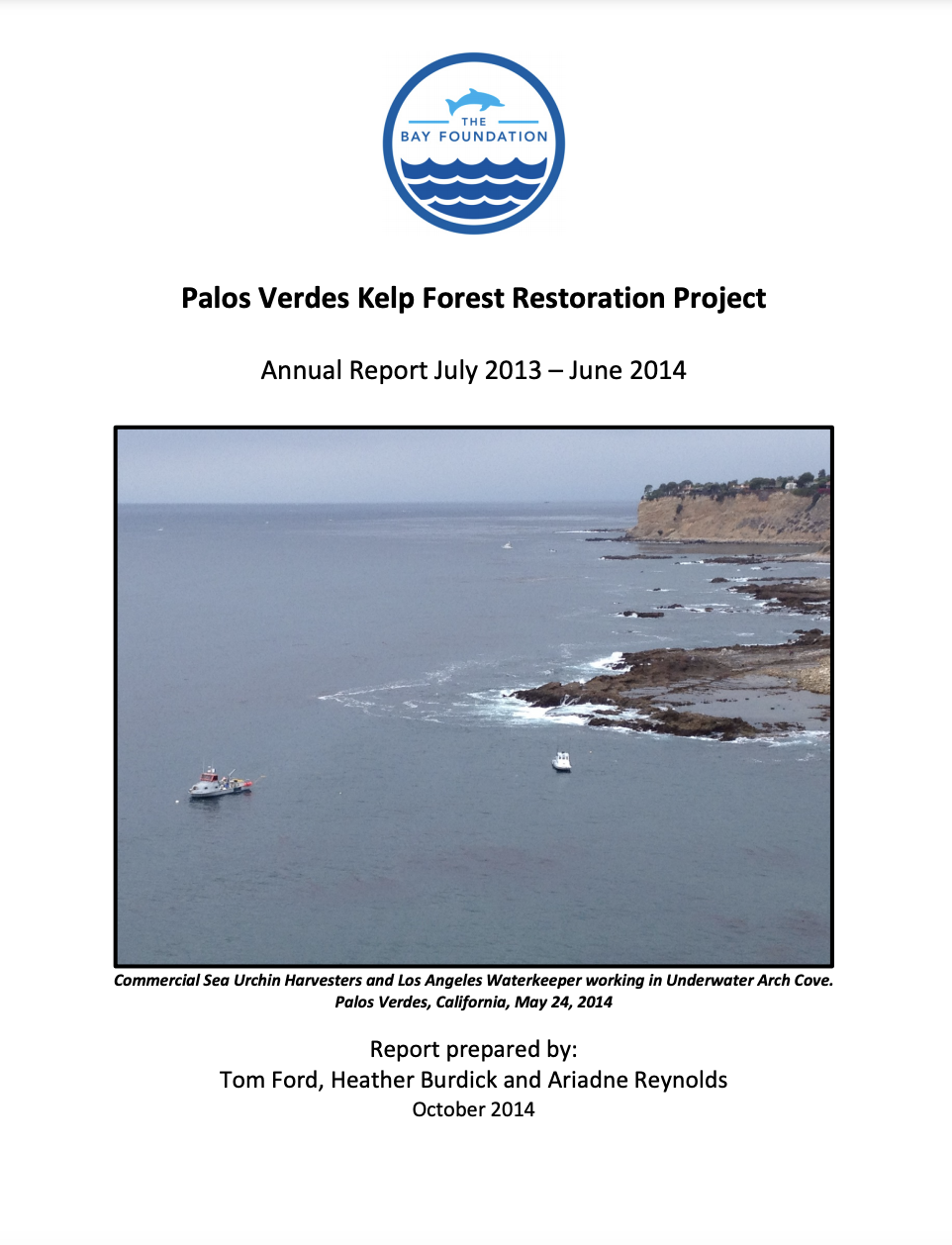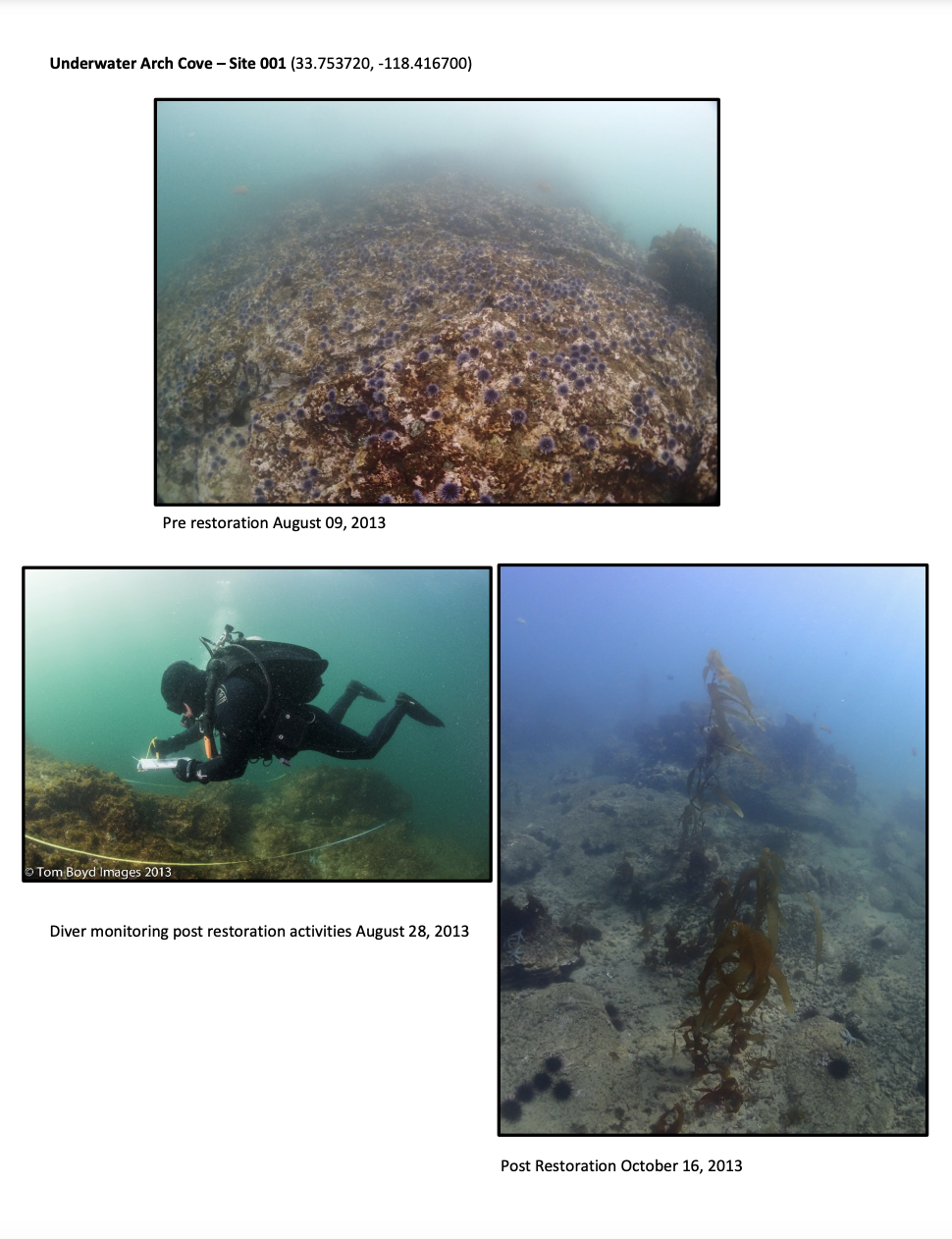The primary goals of this project were to test a non-lethal method of determining the sex of California halibut (Paralichthys californicus) and to obtain samples in a way that avoids causing additional mortality to a significantly depleted resource. Secondary goals are to also build capacity for collaborative research with California Department of Fish and Wildlife… Continue reading Halibut Sexing Research Final Report – February 2014
Topic: Ocean
Development and Application of Genomic Tools to The Restoration of Green Abalone in Southern California
(Abstract) Due to severe declines in abundance throughout southern California, the green abalone (Haliotis fulgens Philippi 1845) became protected under a state-sponsored fishery moratorium in 1997 and was declared a NOAA NMFS Species of Concern in 2004. Recently, H. fulgens was chosen for possible stock restoration via translocation of wild adults to depleted habitat and supplementation through releasing… Continue reading Development and Application of Genomic Tools to The Restoration of Green Abalone in Southern California
Aerial Monitoring of Ocean Vessels in Southern California – August 2013
Objective long-term data on the type, extent, and location of boating and boat-based fishing directly support the success of marine spatial planning and resource management of coastal oceans. This project was initiated to generate an objective fishery-independent dataset to define the extent of boating activities in the state waters off the coast of mainland southern… Continue reading Aerial Monitoring of Ocean Vessels in Southern California – August 2013
Kelp Forest Restoration Annual Report July 2013 – June 2014 (Year 1)
This project developed from an interest in the protection and preservation of giant kelp communities in the Southern California Bight. July 2013 – June 2014 Annual Report for the Palos Verdes Kelp Forest Restoration Project.
Kelp Forest Restoration Annual Report July 2013 – June 2014 (Year 1) – Appendices
Pre- and Post-Restoration images and maps (Underwater Arch Cove and Honeymoon Cove).
Clean Boating
With four million boaters, California has one of the highest levels of recreational boating in the United States. This large volume of recreational activity in our waterways can come at a cost. Boat-based pollutants such as sewage, used oil, household hazardous waste, marine debris, aquatic invasive species, and emerging contaminants impair our waterways. TBF’s Boater… Continue reading Clean Boating
Dockweiler Beach Dunes
The Dockweiler Beach Dunes aims to establish approximately four acres of sandy beach and coastal bluff habitat and implement a pilot restoration to establish adjacent offshore eelgrass within a one-acre footprint. This initiative establishes a healthy living shoreline that can support native plants and animal species both in marine and terrestrial ecosystems, while providing enhanced… Continue reading Dockweiler Beach Dunes
Eelgrass Research and Restoration
Eelgrass (Zostera spp.) is a marine flowering plant that forms “meadows” and is found in temperate regions throughout the world. The Bay Foundation (TBF) and project partners are working to restore eelgrass meadows while researching the plant and its habitat. Eelgrass are economically and ecologically valuable marine habitats. They and other seagrasses provide several ecosystem… Continue reading Eelgrass Research and Restoration
Kelp Forest Restoration
The kelp forest ecosystems off the southern California coast are known to be some of the world’s most diverse and productive ecosystems. They are vital for providing habitat and food for over 700 marine species, including kelp bass, California spiny lobster, abalones, marine mammals, birds, and fish. Many of these kelp forest species are the… Continue reading Kelp Forest Restoration
Kelp Forest Hydrodynamics
Frequent storms and larger waves pounding the Southern California coastline are major causes for concern if we hope to preserve our beaches and rocky shorelines for future generations to enjoy. The Bay Foundation (TBF) spearheaded a study to investigate how we can protect our shorelines using kelp forest restoration techniques. A variety of tools are… Continue reading Kelp Forest Hydrodynamics
